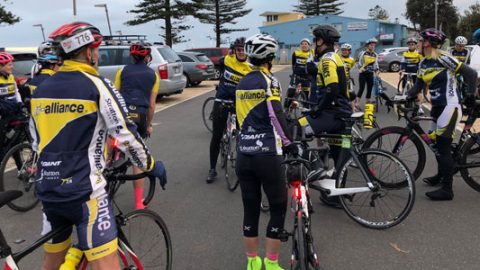You have spent months preparing for your Ironman. Countless hours, early mornings, late nights, social sacrifices and more. Make sure you don’t let it all go to waste by taking a chance with your bike and equipment. Make sure you read our best pre race bike do’s and don’ts in preparation for your next Ironman.

DO’s (a must!)
- Invest in a new set of tyres. Whether these be singles/tubulars (will set you back around $300 for a pair) or clinchers (around $150 a pair) you should never risk going into a race with old tyres.
- Put your new tyres on around a week before. Make sure you have at least one ride on them before your race.
- Invest in a new chain, cassette and cables if they have done 2+ Ironmans, or training equivalent.
- Spending around $500 on the above gear will provide you with peace of mind and minimise the chances of equipment failure.
- Book your bike in for a pre race service/tune up around 10 days prior to your race. Ensure you allow 1-2 short rides after the service so you are happy with how your bike is running.
- Prepare your spare tubular wheels (or have your bike shop do for you). Do this by pre stretching the tyre on a spare wheel (no glue) and inflate. Leave for 3-4 days, remove and it’s ready to be your spare on race day.
- Treat your tubular tyre with a latex sealant before hand to help prevent flats. It does however only last around 3months once in a tyre, and doesn’t work well with clinchers.
- Ensure your spare tyres/tubes have the correct size valve – they need to be long enough for your deeper race wheels.
- Always take spares during your race. It’s not worth the risk not to. And the on course support will not be able to assist if you don’t.
- Know your equipment. Know how it works and how to repair.

- If you are in doubt – seek advice from the professionals (your local bike shop!)
DON’TS
- Don’t over inflate your tyre pressure: 120-140psi in singles is enough, 110-120psi clinchers.
- Tyre pressure will need to be adjusted for the type of surface or conditions you are racing in. So be aware of this.
- Don’t over glue your singles – if you do this is when you will have problems taking it off if you get a flat.
- Don’t leave a section of your single/tubular tyres unglued as this can create a weak spot and tyres have been known to come off.
- You don’t need to totally deflate your tyres the night before a race, its more important to ensure they are inflated race morning.
- Don’t pre stretch your singles/tubular tyres by hand, this can damage the fibers and create weak spots in the tyre. (Read above on how to pre stretch a tyre)
- Don’t get support/helpers in the bike compound to pump your tyres race morning. They mean well, but may not do it correctly. Always take your own pump (or borrow one) and do it yourself.
- Don’t undo valve too much when pumping a tyre. You only need to unscrew enough to get air in, otherwise you risk damaging valve.
- Firstly – don’t panic. You should have come prepared so you will have everything there, just relax and start the tyre changing process.
- Step 1. Try using a latex sealant as your first option. Put the sealant in the tyre and spin the wheel to seal the puncture then use C02 canister to inflate.
- Step 2. Stop at aid station if you need more air – you don’t need to wait for on course support. As long as you have enough air to get to an aid station this is your best option.
- If the latex sealant hasn’t worked you will need to change the tyre. Remember – breath, relax and you will have it fixed in no time.
CHANGING A SINGLE / TUBULAR
- Start at the opposite side of the tyre to the valve.
- Work back and forwards each side of the rim with your hands. You may need to use a tyre leaver to get started.
- Once the tyre starts to come away you can pull off fully from the rim
- Be careful not to place your rim in grass/dirt. You don’t want to have any foreign objects stuck to the glue on the wheel.
- Put the tyre on valve first and work around the opposite way to putting on.
- Check and double check the tyre is centered then inflate with canister or pump.
Do I try and remove old glue? If caked on and ‘bally’, then yes, otherwise leave left over glue and place new tyre over the top.
CHANGING A CLINCHER
Anyone racing an Ironman should know (and have had practice changing a normal ‘clincher’ tyre. You can view our YouTube Clip online to refresh your memory. And remember to have all the equipment you need in the race: Tube, Levers, Canisters/pump.
Click here to view how to repair a puncture.
Follow the above and you will help ensure you have an incident free race!
Tri Alliance is proudly supported by GIANT Bicycles and Bicycle Inc. Contact Bicycles Inc for your next Pre Race Service.







